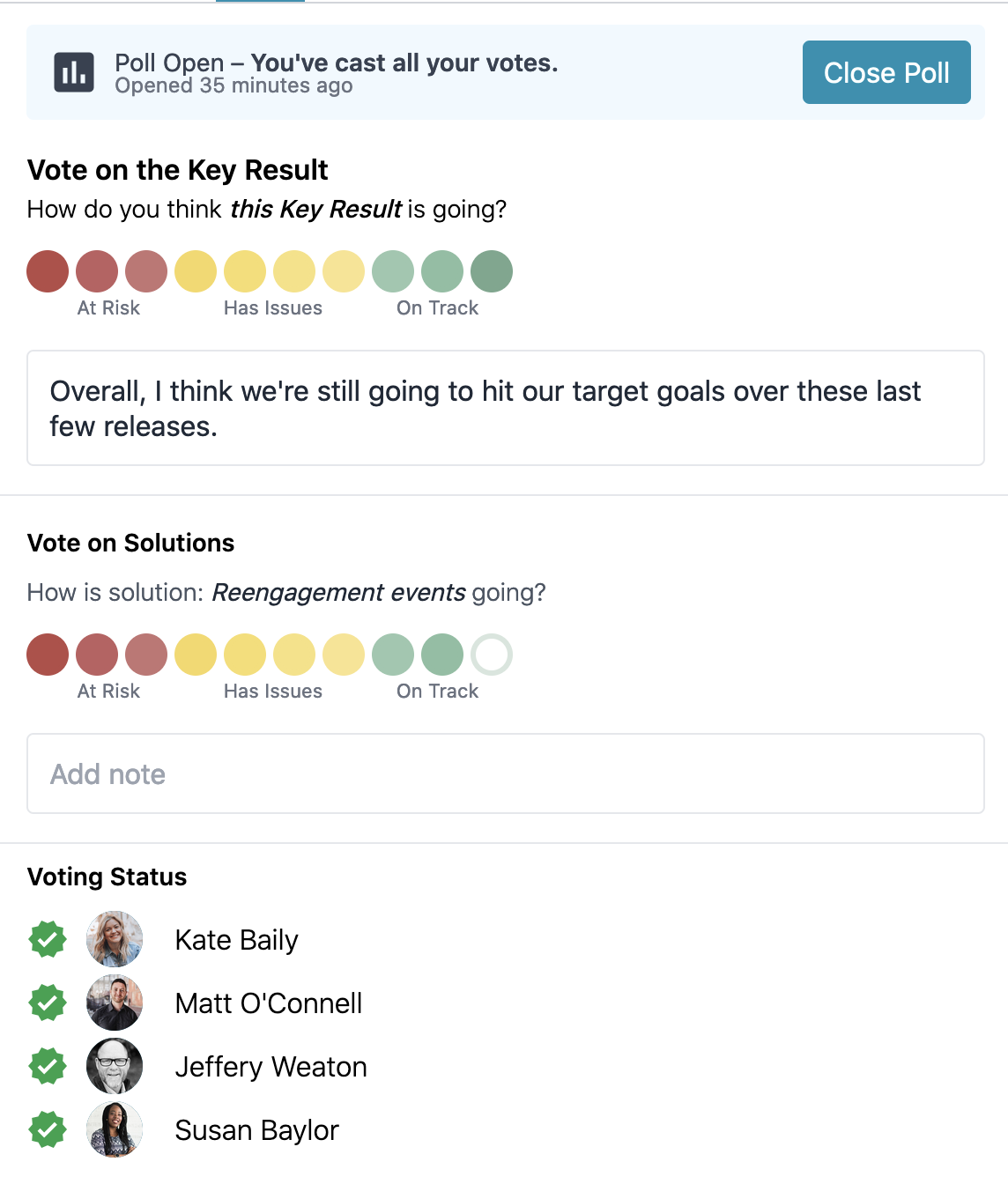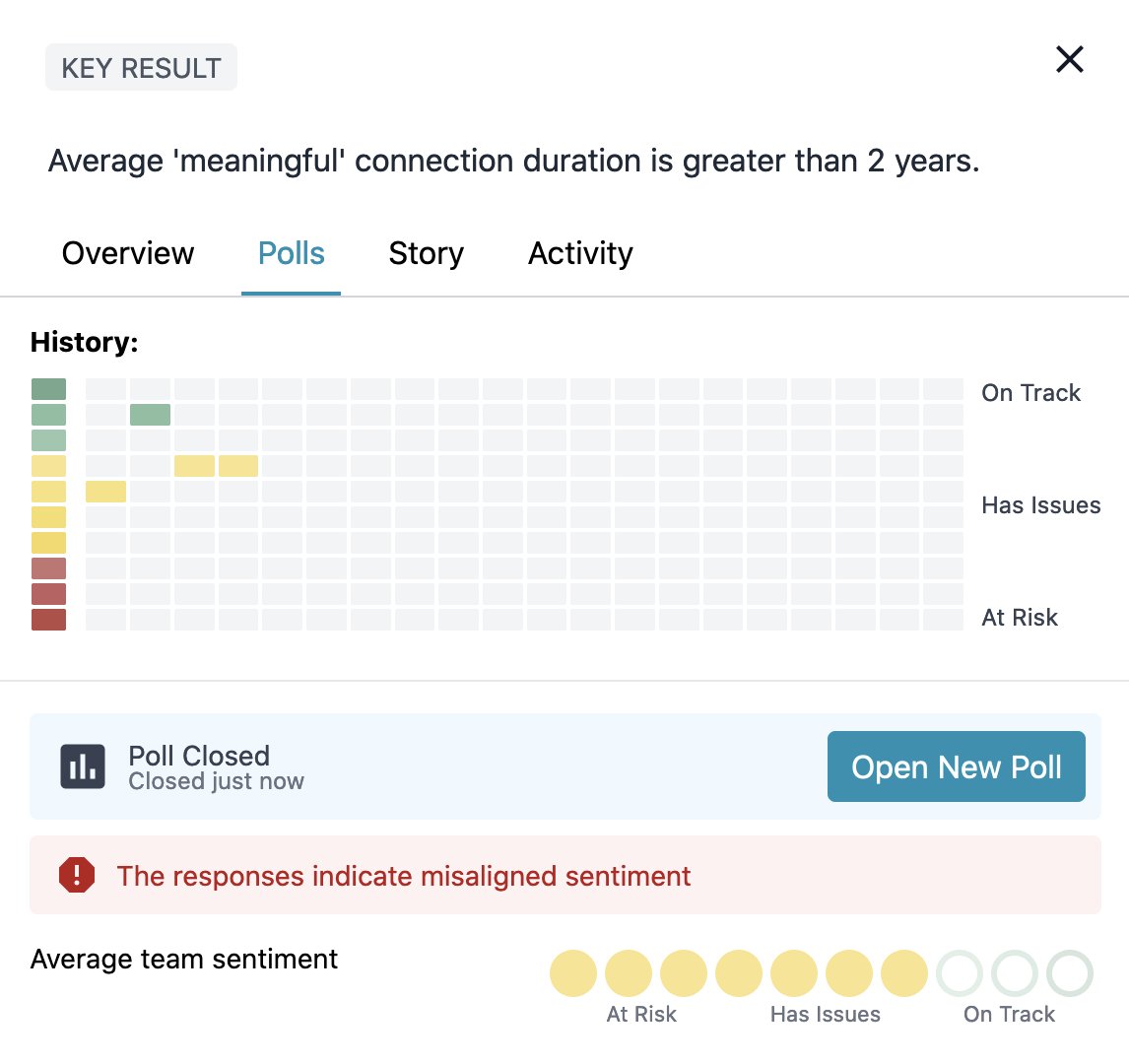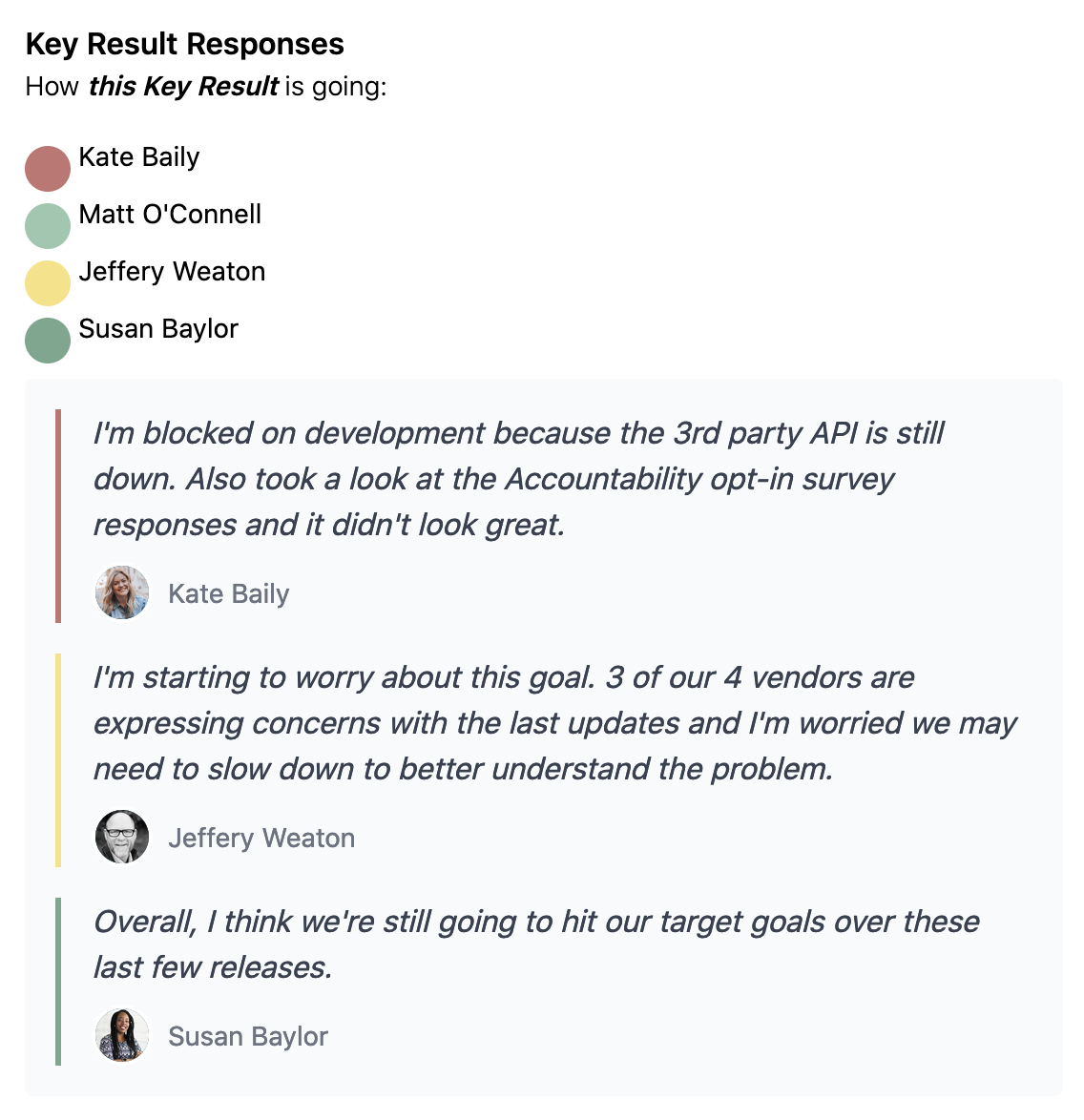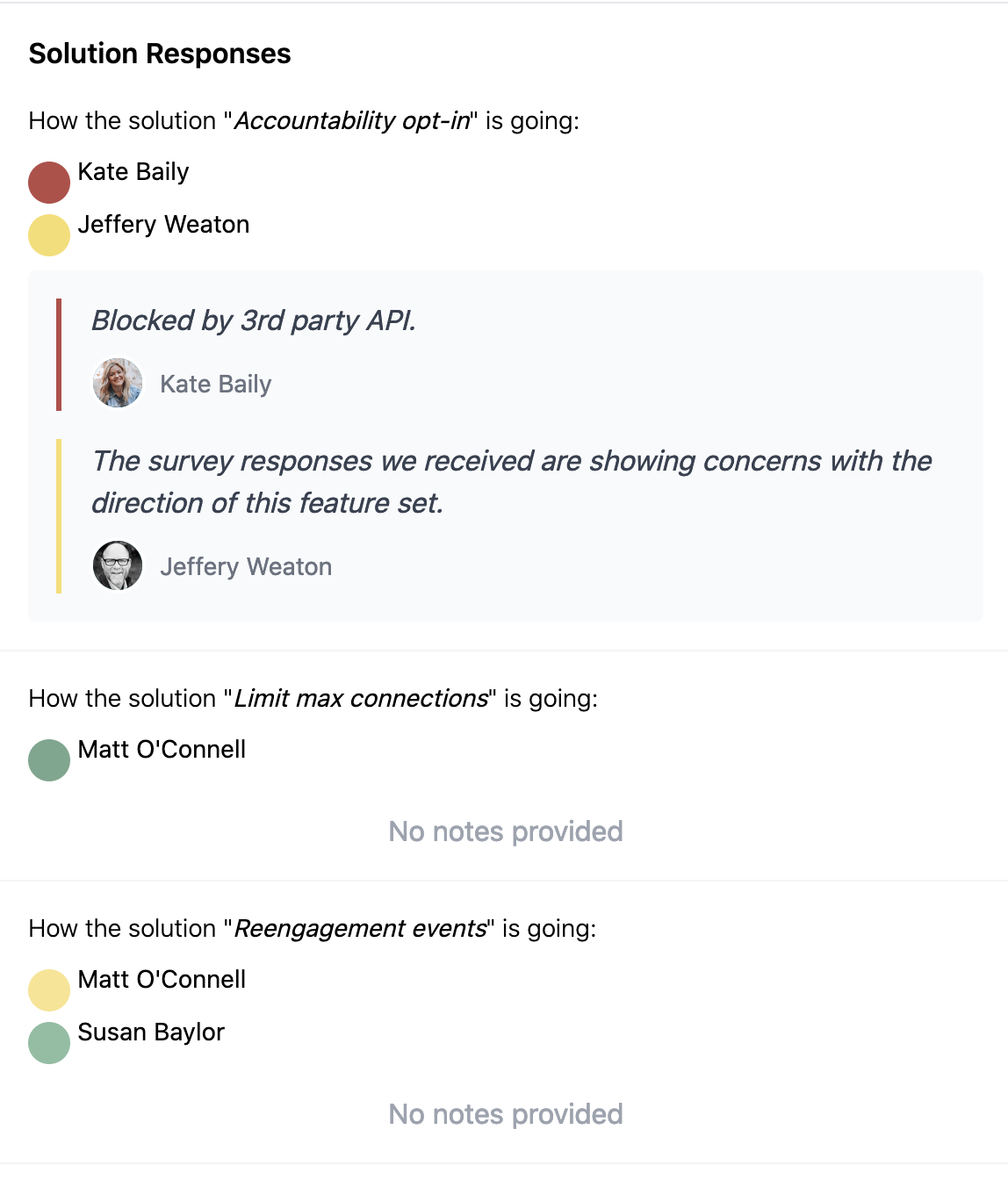Even the best teams understand that building great products is complex work.
One aspect that can be particularly tricky is finding, assessing, and communicating risks. If ignored, risk leads to failed projects, team member frustration, team member attrition, user churn, etc...
Risk is not always straightforward and manifests in more ways than one.
Feasibility challenges
- Did we learn something that is causing scope to increase?
- Did a blocker come up that prevents continued work?
Desirability challenges
- Are users responding as expected?
- Do users even care about this solution?
Usability challenges
- Do users know how to interact with the solution?
Commitment challenges
- Does remaining work match early expectations?
Morale challenges
- Does the team feel good about progress?
- Do stakeholders feel good about progress?
It's never trivial to capture an accurate status of progress and risk across a product portfolio. To do it right typically requires a lot of time, energy, and coordination. Standups, 1:1s, and brief status updates are great tools to solicit feedback but tend to miss a crucial piece of information - interpretation of sentiment.
"Am I interrupting your assessment correctly, or is there more or less risk than I'm seeing in this update?"
There are several ways to approach collecting sentiment. When uncovering risk, it's best to understand how those out on the front lines of product development feel about their work - they are the ones talking to customers, designing experiences, building solutions, and analyzing the data.
Vistaly's approach to collecting and interpreting sentiment
This section showcases Vistaly's approach to collecting and interpreting team sentiment. While Vistaly makes this easier to evaluate and track risk over time, you can take these ideas and implement them in various other ways that work for your team.
We've made it easier for you and your team to do it right and surface risk, celebrate wins, and share updates across the entire team.
Here's how it works.

When opening a poll on a Key Result, every assigned team member provides their assessment of progress. This progress is distinct from execution-style progress.
"What do you think about the progress made towards the overall goal?"
Compared to
"What do you think about the progress made towards the tasks you're working on?".

Collecting execution-style progress updates is also a piece of the risk assessment puzzle. After asking about how a team member feels about progress towards a Key Result, Vistaly generates a list of in-progress solutions specific to each team member's assigned work.
Once the responses are collected, a poll may be closed. Once closed, the results become available to the team.

At the top of the response view, a team's average sentiment calculates and plots against previous polls. Adding an element of time will show how progress is trending on longer-running Key Results and can help combat some of our own confirmation biases. If there is a misaligned sentiment among respondents, a banner displays to surface the misalignment.

The next section of the result view shows individual responses for the overall Key Result. This view allows teams to resolve issues at a higher level before they become more problematic.

The last section lists each in-progress solution with an update from the assigned team member.
With this information at hand, you can now save yourself time and improve the accuracy of your team's risk assessments and progress updates. You never know - you may end up saving the day 😀 .